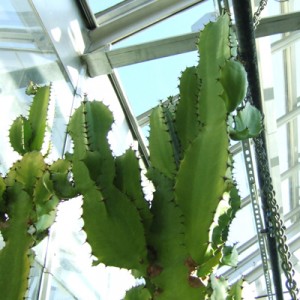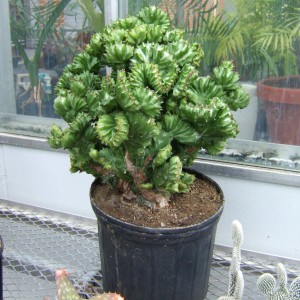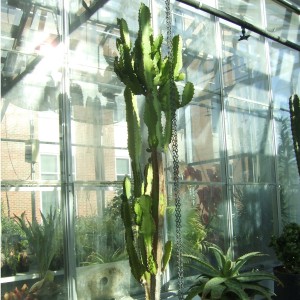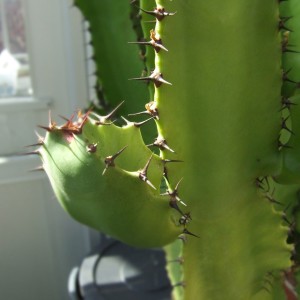Euphorbia
The genus Euphorbia
| Description | The Euphorbia genus is part of the family Euphorbiaceae. This genus is well known for having over 2000 species and being one of the most diverse genuses in all the plant kingdom. Euphorbias may range from low-growing, weed-like “spurges” to impressive, cactus-like succulents that can grow to several meters in height. One famous member of this genus is the Poinsetta (E. pulcherrima), a beautiful, popular household plant. |
|---|---|
| Area | Euphorbia occupies a very wide range, from tropical areas of Africa (where most of the succulent Euphorbias originate), Madagascar, and the Americas to warmer, temperate areas of Asia and Europe. Euphorbia species can also be found in the Pacific Islands and Australia. |
| Special Characteristics |
Most euphorbia species exude a milky, latex sap when cut open. This is a natural wound-healing mechanism for the plant, as well as serving as a defense mechanism for deterring animals from eating it. It can cause painful inflammation and a rash if it comes in contact with skin. The latex of some species can be quite dangerous to humans if ingested. Here is a useful guide to the toxicities of various species. The chemical composition of this toxin is a di- or tri-terpene ester, which varies based on species. This milky sap is the defining characteristc of all euphorbia species, and distinguishes them from cacti. Currently, an Australian company is researching the use of E. peplus sap as a treatment for skin cancers. The theory is that the sap destroys the malignant cells in the skin, forming a scab which eventually sloughs off. |
| Reproduction | Since Euphorbia is such a diverse genus, many modes of reproduction are seen. Some plants are monoecious, having both male and female flowers on the same plant. Some Euphorbias are dioecious, or having male and female flowers on different plants. |
| Trivia | Carolus Linnaeus named this genus after the Greek physician Euphorbus, who was credited with discovering a medicinal use for Euphorbia (most likely Resin Spurge). |



